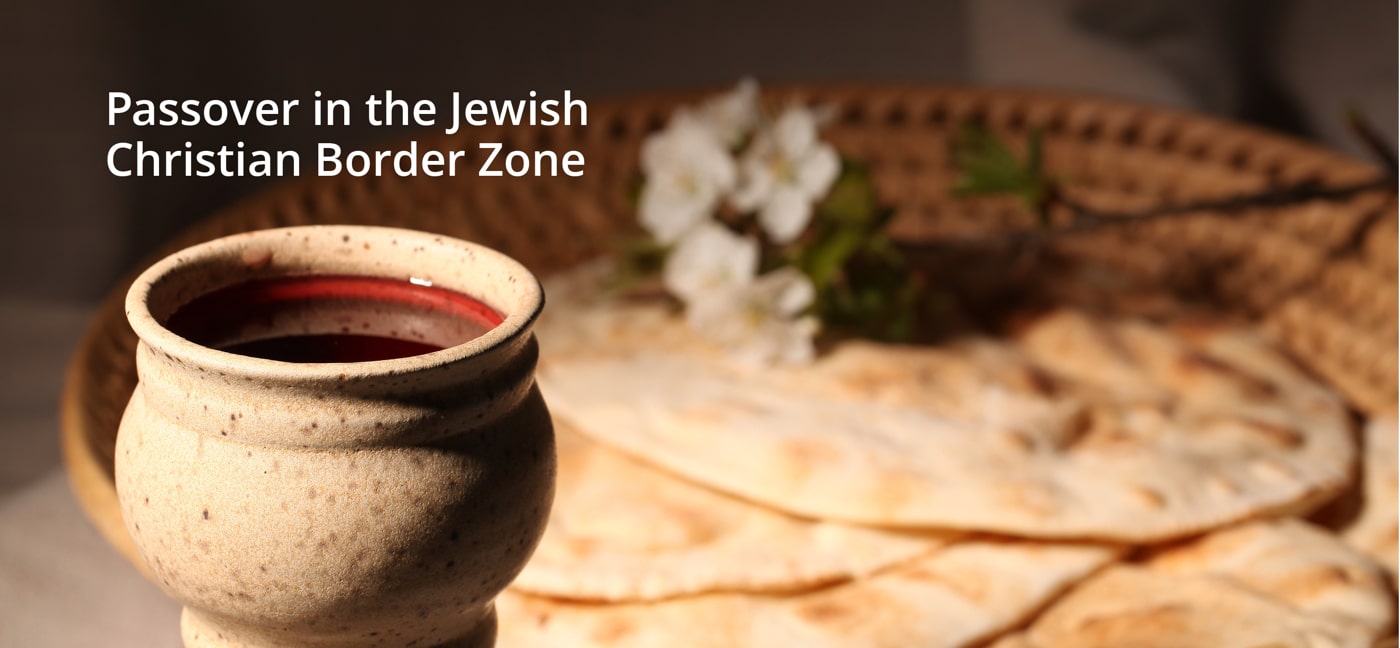Passover in the Jewish Christian Border Zone

I am on my way to a Passover Seder at Brigham Young University. Sponsored by the program in Religious Education, the occasion garners enormous interest. A friend tells me that I had better sign up early because it always sells out.
I have heard about the event for years — mostly from my students at the University of Utah, where I teach literature and Jewish Studies. It always sounded quirky and interesting, but now that I am writing a book entitled “Holy Envy and the Jewish-Christian Borderzone,” I feel obliged to check it out.
These seders are held on a Friday night — Sabbath Eve. Already I discover that traveling into the border zone can entail discomforting choices; typically I don’t go anywhere on Friday nights, except to celebrate the Sabbath. But research calls. As the hour draws near, I find I am dragging my feet; I don’t want to go. Friday afternoon traffic is terrible; and once I get to BYU, I can’t figure out where the event is being held. I wander through enormous ballrooms until at last a student approaches, asking me what I am looking for. When I explain, he looks at me curiously and says, “Oh I’ll take you, but why are you going? You’re Jewish, aren’t you?” How does he know? I am not wearing a yarmulke, or anything else that betrays my identity. But somehow my “otherness” blares.
I walk into a small ballroom filled with long tables and not an empty seat in sight. Over a hundred people are looking towards the front of the room outfitted with a screen. The “seder’ is in progress. I am about to take a seat along the wall, planning simply to be a spectator or silent witness, when a woman hurries up to me, pointing towards a seat at the table. Now I’m in for it. I sit next to Clayton, one the best-behaved 10-year-olds I’ve ever met. The rest of the table nods and turns back to the PowerPoint presentation on “Passover at the time of Gamliel and Jesus” (Second Temple Judaism holds special appeal for Mormons, who see themselves as inheriting and extending the Temple tradition). I find myself thinking, “Okay, the Seder as a museum — a bit off-putting, but nothing terribly objectionable.”
Then the leader announces that the “lecture’ is over, the seder itself will begin, and dons a yarmulke. I begin to get nervous and find myself desperately scrawling a list of all the things I have to do before Pesach really begins: kasher the silverware, clean out all the chametz (leavened foods), muttering to myself “I don’t just visit Pesach, I live there.”
The leader tells the group to pour “two fingers” of “wine” (grape juice, since Mormons don’t drink alcohol) and proceeds to say the bracha (the blessing) in Hebrew: a non-Jew prays to the Jewish God as part of a performance. Looking back over my notes I see that I have scrawled, “This isn’t yours, it’s mine!” This is probably the moment when I feel most deeply estranged, longing to be at my own Shabbat table; the border zone can be a cold, lonely place, saturated with loss.
And then I hear the leader explaining that the salt water in which we are to “swirl” our parsley symbolizes the tears of the Egyptian mothers mourning their sons lost in waves of the Red Sea. It is a moving interpretation, a wonderful drash, and new to me. Compassion for others, intuited by others. The border zone, it seems, can also be the site of new meaning.
It is time to eat. Clayton, who has waited patiently, tucks in. The rest of the table starts to pepper me with questions: “Do you know this all by heart?” “Have you been to a seder before — you seem to know what you are doing” (and here I thought I was being so discreet). “Is this what real seders are like?” I don’t dissemble, but after explaining that at my house seders are quite a bit noisier and messier, I begin to ask them about their own interest in attending. The answers are varied, but share a common theme: we identify with your story; we too struggled to be free; we too were oppressed; we too have food rituals. Listening to these responses, I start thinking about the limits of analogy. Is abstaining from alcohol or hot beverages in the Mormon tradition equivalent to not mixing meat and milk in the Jewish? And what about comparing a recent historical event — a grueling trek undertaken by nearly three thousand Mormons over a period of four years, pushing handcarts from the Midwest to Utah in search of religious freedom — to a mythic account chronicling more than two-hundred years of slavery brought to an end only by divine intervention?
Before I can reflect any further on such questions that arise when religions come in contact, I overhear my neighbor musing, “It is funny that the Jews don’t understand that Passover is really all about Jesus. After all, they were saved because of the Blood of the Lamb on the doorpost.” All night I have been vigilant, on guard for even a whisper of religious appropriation, and just when I start to relax … bam! There it is. The border zone threatens to become a combat zone. But before I am able to react, the leader announces that the “seder” meal will conclude with a blessing . . . and BYU’s signature mint brownies. Although efforts have been made not to serve leavened food, exceptions must be made — and, to Clayton’s delight, I give him mine.
Once the afikomen has been found (and redeemed for another brownie), the leader dramatically takes off his yarmulke, saying, “Now I want to tell you why YOU should care about the Passover seder.” I sit up straight, listening hard. He continues: “as you know, Jesus was a Jew. Many Christians don’t know this, but he was, and he celebrated Passover.” Gesturing towards an image of Jesus at a table with the apostles, the leader cites a verse from Luke: “And he took bread, and gave thanks, and brake it, and gave unto them saying: ‘This is my body, which is given to you.’ Seders, like this, help us build a bridge to our Jewish friends.” (Well, maybe…) The leader continues: “But more importantly, Jesus instituted the sacrament, and on this occasion, we gather to celebrate not just His resurrection but this time of redemption. For we know that Elijah appeared to Joseph Smith to sanctify the building of the first temple. He — Elijah — is with us.”
I look quickly at my neighbor (the same one who insisted that Passover is really all about Jesus) and, without my asking, he says: “In 1836, upstate New York, Elijah appeared in a vision.” Then the leader asks us all to stand to welcome Elijah: “for Christ has risen and redemption is at hand.” A student opens the door to the ballroom and we all turn in her direction. The leader raises the fourth cup — Elijah’s cup — the cup of redemption, which also signifies resurrection; and we are all silent. Utterly silent for a full minute, I twitch a bit, singing under my breath “Eliyahu hanavi…” (the hymn to Elijah). Then I give in to the silence. The seder is over. As we file out, I ask my neighbor (yes, the same guy) how he felt during that moment of ripe emptiness and fullness. He looks back, meeting my gaze, and says, “Holiness. I felt holiness.”
We say our goodnights. Walking out into the dark, I think of my own seders (and those of my friends), and how the moment when we open the door for Elijah is usually filled with awkward giggles; someone might move the table (as if at a séance), saying “oooh, do you think he is here?”; or someone’s uncle wearing a Santa Claus beard knocks at the door and enters to gales of laughter and song. If anyone believes — really believes — that the messiah might arrive, or even that it is the faintest of possibilities, they keep it to themselves. But now, thinking about that ballroom filled with such calm, sturdy faith, I get a taste of “holy envy,” knowing now what it means to experience spiritual lack.
On the way back to my own, “authentically” Jewish home, where my own Pesach preparations await, I find that I am emotionally spent. The Jewish Christian border zone is so very messy: disquieting, humbling, and well worth the trip.
Maeera Shreiber is Associate Professor of English and Religious Studies at the University of Utah. She is the author of Singing in a Strange Land: A Jewish American Poetics and the forthcoming Holy Envy: Writing in the Jewish Christian Borderzone.
![]()



